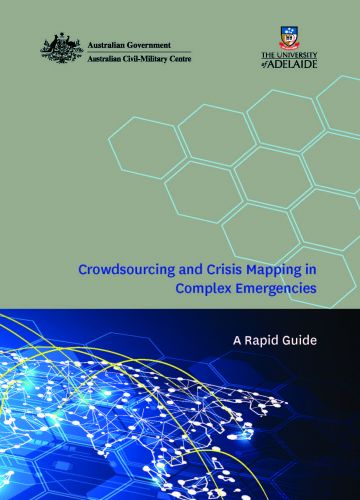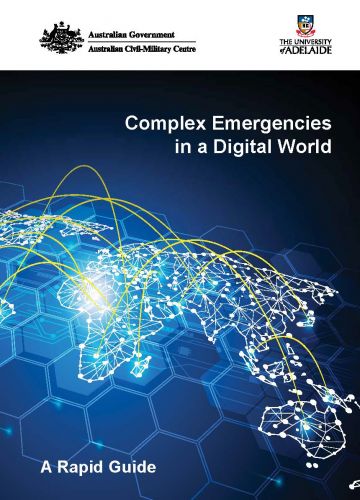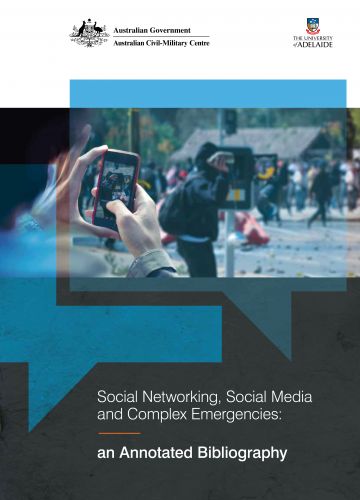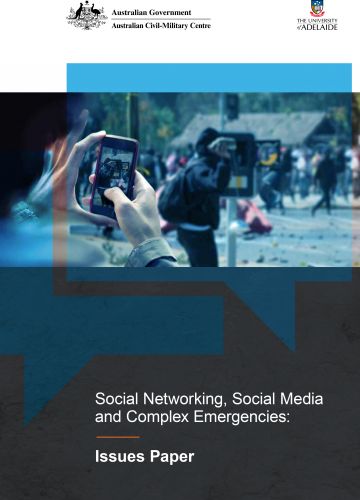The Communication and Complex Emergencies Project is a multi-phase collaboration between the University of Adelaide’s Applied Communication Collaborative Research Unit and the Australian Civil-Military Centre. The current phase of the project focuses on a range of new information and communication technologies (ICTs) and digital platforms and their role in supporting emergency and humanitarian relief and assistance processes during complex emergencies.
This guidance paper examines the use of crowdsourcing and crisis mapping during complex emergencies. Crowdsourcing is a process facilitated by new information and communication technologies, social media platforms and dedicated software programs. It literally seeks the help of ‘the crowd’, volunteers or the general public, to complete a series of specific tasks such as data collection, reporting, document contribution and so on. Crowdsourcing is important in emergency situations because it allows for a critical link to be forged between those affected by an emergency and those who are responding to it. Crowdsourcing is often used by news organisations to gather information, i.e. citizen journalism, as well as by organisations concerned with emergencies and humanitarian aid, i.e. International Committee of the Red Cross, the Standby Task Force and CrisisCommons. Here, crowdsourced data on voting practices and electoral violence, as well as the witnessing of human rights contraventions are helping to improve accountability and transparency in fragile or conflict-prone states. Equally, crowdsourcing facilitates the sharing of individual and collective experiences, the gathering of specialized knowledge, the undertaking of collective mapping tasks and the engagement of the public through ‘call-outs’ for information.






